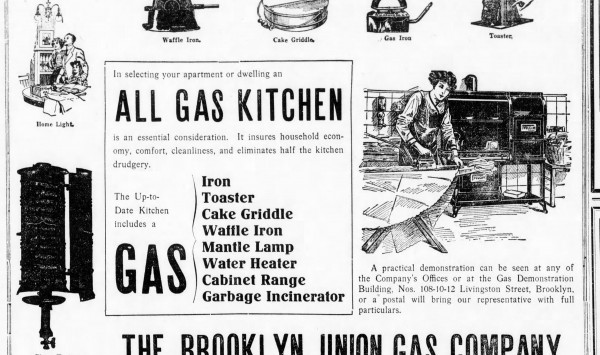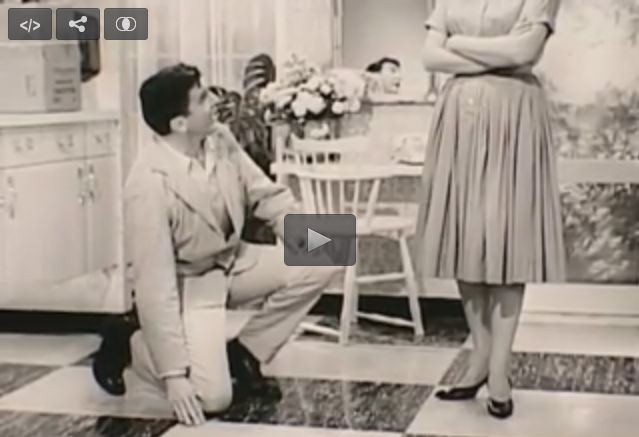BROOKLYN’S ALL GAS KITCHEN! (1914)

******************************************************************************************************************************** Brownstone Detectives investigates the history of our clients’ homes. The story you are about to read was composed from research conducted in the course of one of those investigations. Do you know the history of YOUR house? ******************************************************************************************************************************** Just like today, gas stoves were once pushed onto Americans with a fury. Fueled by ads, lobbying, and massive amounts of money, the Brooklyn gas company told homemakers that gas was “essential” for “economy, comfort, cleanliness,” and guaranteeing an elimination of “half the kitchen drudgery.” Little did homemakers know, at the time, about the future controversy regarding gas as a health concern in the home. THE FUTURE – GAS! O, Brooklyn Union Gas Company! Thanks to you, my wife can be more efficient in the kitchen with the chemical of the future – GAS! Begun in 1825 as the the Brooklyn Gas Light Company, it became Brooklyn Union around 1895, and remained so until the end of the last century when a merger brought about KeySpan. Imagine! Installing, in 1914, a Gas Garbage Incinerator in your brownstone’s kitchen! That year, the Brooklyn Union Gas Company was pushing their gas appliances not only to heads of households, but they were also targeting “Progressive Business Men” to whom they claimed were attending the “special demonstration of gas industrial appliances at the gas industrial show rooms” at 108-10-12 Livingston Street, known as their “Gas Demonstration Building.” At their showrooms they announced, were “gas engine electric generator sets, automatic gas fuel steam boilers, sanitary bakers’ […]
THAT KENTILE FLOORS SIGN IN BROOKLYN

As the salvos are fired across the broadsides of those who would tear down Brooklyn’s famous Kentile Floors sign, few know the history behind the company, its founder, and its legacy. Kentile was a revolutionary floor covering that was easy to install and extremely resistant to fire. The asphalt tiles were primarily composed using an asbestos filler which today is no longer legal, due to the knowledge we currently have of the harmful effects of asbestos on our bodies. But Kentile was a start-up in the late 19th century in Brooklyn that made its inventor rich and many, many housewives much, much happier in their kitchens. IN THE BEGINNING In 1898, Arthur Kennedy founded Kentile in Brooklyn. Kentiles were “large durable tiles made of a range of materials that were available in dozens of colors and patterns.” Kentile Flooring was primarily marketed in Brooklyn and the surrounding region back then, but eventually, as they became popular, spread their availability throughout the country. By 1949, they began producing an asphalt based tile and, as an industry leader, their stock skyrocketed. Although they had their competitors, such companies as Armstrong, Congoleum-Nairin and Montgomery, Kentile offered a consumer-install option that was attractive to the DIY-er. By the ’50s and ’60s, Kentile Floors had become one of America’s largest manufacturers of super-resilient floor tile, and it was a national tile distributor. The Kentile factory at Second Avenue in Gowanus – where the Kentile Floors sign is currently being removed – employed more than 400 […]